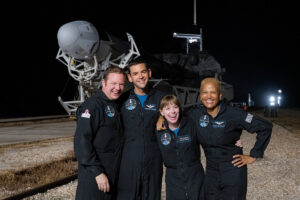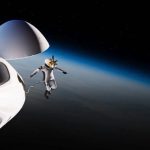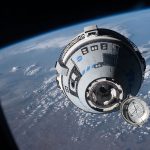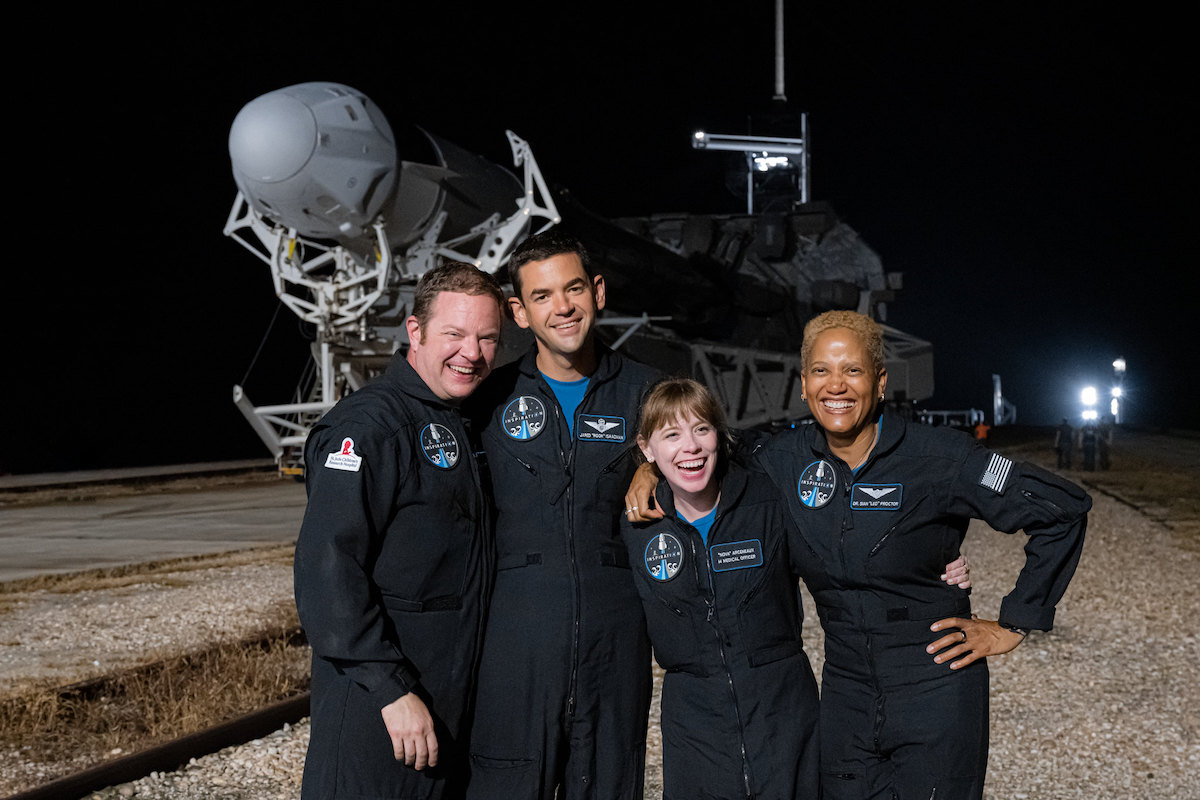 SpaceX successfully launched a Crew Dragon spacecraft carrying four nonprofessional astronauts on its first private crewed mission named Inspiration4 on Sept. 15, a long-awaited milestone in the commercialization of spaceflight.
SpaceX successfully launched a Crew Dragon spacecraft carrying four nonprofessional astronauts on its first private crewed mission named Inspiration4 on Sept. 15, a long-awaited milestone in the commercialization of spaceflight.
The Falcon 9 lifted off at 8:02 p.m. Eastern from Launch Complex 39A at the Kennedy Space Center. There were no issues reported during the countdown or liftoff, with the Crew Dragon spacecraft Resilience separating from the rocket’s upper stage 12 minutes after liftoff after reaching orbit.
The Crew Dragon is flying a private mission called Inspiration4. The four people on board, none of whom are astronauts employed by a government agency or company, will spend three days in space at an altitude of approximately 575 kilometers before splashing down off the Florida coast.
The mission is the fourth crewed flight by SpaceX, but the first that does not involve NASA. The Demo-2, Crew-1 and Crew-2 missions all featured astronauts from NASA, the European Space Agency and Japanese space agency JAXA on missions to the International Space Station. Inspiration4 will not dock with the station.
Resilience, which first flew on the Crew-1 mission that returned to Earth from six months at the ISS May 1, is largely unmodified from others used for ISS missions, said Benji Reed, senior director of human spaceflight programs at SpaceX. The main difference is the addition of a large domed window, or cupola, in place of the docking adapter in the nose of the spacecraft.
“Since we’re not docking anywhere, it makes sense to have a cupola, and have the biggest continuous window that’s ever been put in space,” he said at a prelaunch briefing Sept. 14. “It’s otherwise the same, very safe Dragon that we’re flying right now for NASA.”
Inspiration4 is led by Jared Isaacman, a billionaire thanks to the online payments company, Shift4 Payments, that he founded. Isaacman and SpaceX announced Inspiration4 in February as a mission to raise at least $200 million for St. Jude Children’s Research Hospital.
The four people flying the mission fit into themes of leadership, hope, generosity and prosperity. Isaacman, the commander, represents leadership. The hope seat is filled by Hayley Arceneaux, a physician assistant at St. Jude who was treated for cancer there as a child. The 29-year-old is the youngest American to go into orbit and is the first with a prosthetic, a titanium implant in her leg from bone cancer treatment.
The other two people came from competitions Inspiration4 conducted in February. Chris Sembroski was the winner of a raffle contest for the “generosity” theme, where people purchased tickets to win a seat. The aerospace engineer entered the competition and was not selected, but got a seat when an unidentified friend who did win gave that seat to him.
The fourth seat went to Sian Proctor, a geoscientist and artist who set up an online shop through Shift4 and submitted a video describing her desire to fly in space for the “prosperity” seat. She participated in analog space expeditions on Earth and was a finalist for a NASA astronaut selection round in 2009.
Inspiration4 will also conduct a series of medical experiments arranged by the Translational Research Institute for Space Health (TRISH) at Baylor College of Medicine and Weill Cornell Medicine. Those experiments range from biomedical monitoring of the crew to cognitive tests, comparing their health while flying at an altitude of 575 kilometers versus the lower altitude of the ISS.
Isaacman said he pushed for the higher altitude for this mission to help tackle some of the risk associated with human spaceflight beyond low Earth orbit, such as radiation exposure, although it’s unclear how much data a three-day flight at that altitude will provide.
“It is a higher radiation profile than what would be observed at the space station,” he said. “The greater the understanding we can have on that, the better planning we can make for future long-duration missions, like going to Mars.”
The mission has more intangible goals as well. The mission is a demonstration of the feasibility of dedicated commercial human orbital spaceflight, a long-standing goal of both the space industry and NASA.




































Add Comment